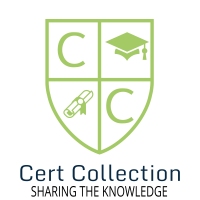Search the Community
Showing results for tags 'livelessons'.
-
English | MP4 | AVC 1280×720 | AAC 48KHz 2ch | 10h 33m | 12.2 GB Table of Contents 1 AWS Certified SysOps Administrator – Associate SOA-C02 – Introduction 2 Module introduction 3 Learning objectives 4 Exam Guide 5 Question Format 6 Exam Labs 7 Learning objectives 8 Installing and Configuring AWS CLI 9 Demo – Installing and Configuring AWS CLI on Linux 10 Demo – Installing and Configuring AWS CLI on Windows 11 AWS CLI Usage Basics 12 Demo – AWS CLI Examples 13 Module introduction 14 Learning objectives 15 Collecting Logs 16 Analyzing Logs 17 Exporting Logs 18 Demo – CloudWatch Log Operations 19 Installing and Configuring the CloudWatch Agent 20 CloudWatch Alarms 21 Demo – Composite Alarms 22 CloudWatch Metric Filters 23 Demo – CloudWatch Metric Filters 24 CloudWatch Dashboards 25 Implementing Notifications 26 Lesson 3 – Question Breakdown 27 Learning objectives 28 CloudWatch Alarm Remediation 29 EventBridge Rules 30 Demo – EventBridge Rules 31 Config Rules and SSM Automation Documents 32 Demo – Config Rules 33 Lesson 4 – Question Breakdown 34 Module introduction 35 Learning objectives 36 Implementing Auto Scaling 37 Demo – Auto Scaling on EC2 38 Caching Solutions 39 RDS and Aurora Replicas 40 Demo – RDS and Aurora Replicas 41 Loosely Coupled Architectures 42 Horizontal and Vertical Scaling 43 Lesson 5 – Question Breakdown 44 Learning objectives 45 ELB and Route 53 Health Checks 46 Demo – Route 53 Health Checks 47 Single AZ and Multiple AZ Architectures 48 Fault-tolerant Workloads 49 Route 53 Routing 50 Demo – Route 53 Latency-based Routing 51 Lesson 6 – Question Breakdown 52 Learning objectives 53 Automated Snapshots and Backups 54 Demo – AWS Backup 55 Database Restore Tasks 56 S3 Versioning and Lifecycle Rules 57 S3 Replication 58 Demo – S3 Two-Way Replication 59 Disaster Recovery Strategies 60 Lesson 7 – Question Breakdown 61 Module introduction 62 Learning objectives 63 AMI Operations 64 Demo – EC2 Image Builder 65 CloudFormation Operations 66 Demo – CloudFormation 67 Multi-Region and Multi-Account Provisioning 68 Deployment Scenarios and Services 69 Deployment Issue Remediation 70 Lesson 8 – Question Breakdown 71 Learning objectives 72 Deployment Process Automation 73 Automating Patch Management 74 Demo – SSM Patch Manager 75 Scheduling Repetitive Tasks 76 Demo – AWS Config Rules 77 Lesson 9 – Question Breakdown 78 Module introduction 79 Learning objectives 80 AWS Permissions Evaluation 81 IAM and Resource Policies 82 Demo – Policies and Conditions 83 Troubleshooting and Auditing Access 84 Validating Permission Boundaries 85 Demo – Testing Organizations SCPs 86 AWS Trusted Advisor 87 Compliance and Region Service Selection 88 Multi-Account Strategies 89 Lesson 10 – Question Breakdown 90 Learning objectives 91 Data Classification Enforcement 92 Demo – S3 Lifecycle Rules 93 Encryption Keys 94 Encryption At-rest 95 Demo – KMS CMK Operations 96 Encryption In-transit 97 Secure Secret Storage 98 Reports and Findings Review 99 Lesson 11 – Question Breakdown 100 Module introduction 101 Learning objectives 102 VPC Configuration 103 Demo – VPC Creation 104 Private Connectivity Configuration 105 Network Protection Configuration 106 Demo – AWS WAF 107 Lesson 12 – Question Breakdown 108 Learning objectives 109 Route 53 Hosted Zones and Records 110 Route 53 Routing Policies 111 Demo – Route 53 Geolocation Routing 112 Route 53 Resolver 113 CloudFront and S3 OAI 114 Demo – Implementing CloudFront and S3 OAI 115 S3 Static Websites 116 Lesson 13 – Question Breakdown 117 Learning objectives 118 VPC Configuration Analysis 119 Network Log Analysis 120 Demo – VPC Flow Logs 121 CloudFront Troubleshooting 122 Private Network Connectivity Troubleshooting 123 Demo – Broken VPC Peering 124 Lesson 14 – Question Breakdown 125 Module introduction 126 Learning objectives 127 Cost Allocation Tags 128 Demo – Cost Allocation Tags 129 Optimizing Underutilized and Unused Resources 130 AWS Budgets and Billing Alarms 131 Demo – AWS Budgets 132 EC2 Spot Instance Workloads 133 Managed Services 134 Lesson 15 – Question Breakdown 135 Learning objectives 136 Compute Resource Selection 137 EBS Performance 138 Demo – EBS Performance Metrics 139 S3 Performance 140 RDS Performance 141 EC2 Network Performance 142 Demo – EC2 Instance Type Selection 143 Lesson 16 – Question Breakdown 144 Module introduction 145 Learning objectives 146 Documentation 147 Hands-on Learning 148 Practice Exam 149 AWS Certified SysOps Administrator – Associate SOA-C02 – Summary [Hidden Content] zippyshare 24 parts
- 36 replies
-
- 187
-

-

-

-
- livelessons
- chad smith
-
(and 1 more)
Tagged with:
-
English | MP4 | AVC 1280×720 | AAC 44KHz 2ch | 8h 47m | 3.61 GB Table of Contents 1 Red Hat Certified Specialist in Containers and Kubernetes – Introduction 2 Module introduction 3 Learning objectives 4 Understanding Containers 5 Understanding Container Architecture 6 Understanding the Container Engine 7 Understanding Container Needs in the Datacenter 8 Understanding Kubernetes and OpenShift 9 Lesson 1 Lab Installing Classroom Machines 10 Lesson 1 Lab Solution Installing Classroom Machines 11 Learning objectives 12 Running Containers on Podman CRI-o 13 Understanding Rootless Containers 14 Understanding Containers and the Host OS 15 Providing Variables at Container Start 16 Lesson 2 Lab Running Containers 17 Lesson 2 Lab Solution Running Containers 18 Learning objectives 19 Using Registries 20 Managing Images 21 Working with Tags 22 Sharing Images 23 Lesson 3 Lab Managing Images 24 Lesson 3 Lab Solution Managing Images 25 Learning objectives 26 Getting Container Status Information 27 Executing Commands within Containers 28 Attaching Storage to Containers 29 Understanding SELinux and Containers 30 Exposing Container Workloads 31 Lesson 4 Lab Managing Containers 32 Lesson 4 Lab Solution Managing Containers 33 Learning objectives 34 Options for Working with Custom Container Images 35 Using podman commit 36 Building Custom Images with Dockerfile 37 Understanding Dockerfile Instructions 38 Optimizing Dockerfile Images 39 Managing Images with buildah and skopeo 40 Understanding OpenShift Source-to-Image 41 Lesson 5 Lab Creating Custom Images 42 Lesson 5 Lab Solution Creating Custom Images 43 Module introduction 44 Learning objectives 45 Understanding the OpenShift Product Offering 46 Using Code Ready Containers 47 Installing CodeReady Container on Linux 48 Installing CodeReady Containers on Windows 49 Installing CodeReady Containers on MacOS 50 Using OpenShift Sandbox 51 Using the Web Console 52 Understanding Authentication and Authorization 53 Using the oc Client 54 Running an Application from the Command Line 55 Lesson 6 Lab Running Applications in OpenShift 56 Lesson 6 Lab Solution Running Applications in OpenShift 57 Learning objectives 58 Understanding OpenShift Resources 59 Exploring the API 60 Deploying an Application in OpenShift 61 Displaying Information about Running Applications 62 Using Labels 63 Using OpenShift in the Declarative Way 64 Using Services to Access Pods 65 Using Routes to Provide Access to Applications 66 Lesson 7 Lab Running Applications in OpenShift 67 Lesson 7 Lab Solution Running Applications in OpenShift 68 Module introduction 69 Learning objectives 70 Understanding Decoupling 71 Using ConfigMaps for Decoupling 72 Working with Secrets 73 Providing Persistent Storage 74 Using Templates 75 Connecting Applications to Create Microservices 76 Lesson 8 Lab Running Microservices in OpenShift 77 Lesson 8 Lab Solution Running Microservices in OpenShift 78 Learning objectives 79 Managing Source Code in Git 80 Understanding S2I 81 Building an Application from Source 82 Analyzing the S2I Procedure 83 Understanding ImageStream 84 Triggering Updates 85 Lesson 9 Lab Building Applications from Source 86 Lesson 9 Lab Solution Building Applications from Source 87 Learning objectives 88 Understanding OpenShift Troubleshooting 89 Troubleshooting OpenShift Authentication and Authorization 90 Troubleshooting OpenShift Application Startup 91 Troubleshooting Running Applications 92 Troubleshooting S2I 93 Troubleshooting Application Access 94 Lesson 10 Lab Troubleshooting OpenShift 95 Lesson 10 Lab Solution Troubleshooting OpenShift 96 Module introduction 97 Learning objectives 98 Exam Tasks Overview 99 Task 1 – Setting up a Podman Host 100 Task 2 – Working with Standard Images 101 Task 3 – Managing Images 102 Task 4 – Managing Containers 103 Task 5 – Using Dockerfile 104 Task 6 – Using CRC 105 Task 7 – Running Applications in OpenShift 106 Task 8 – Decoupling Information 107 Task 9 – Using S2I 108 Task 10 – Troubleshooting 109 Red Hat Certified Specialist in Containers and Kubernetes – Summary [Hidden Content] zippyshare, 7 parts
-
English | MP4 | AVC 1280×720 | AAC 44KHz 2ch | 14h 03m | 3.65 GB Table of Contents 1 Continuous Compliance on AWS LiveLessons – Introduction 2 The Current State of Compliance 3 Setup Development Environment 4 Learning objectives 5 AWS CloudFormation 6 AWS CodePipeline 7 Launch a CloudFormation stack that deploys a deployment pipeline 8 Lesson 1 Quiz 9 Learning objectives 10 Describe cfn nag 11 Run cfn nag from the command line 12 Configure cfn nag to run from CodePipeline 13 Lesson 2 Quiz 14 Learning objectives 15 Describe AWS Config and Config Rules 16 Setup AWS Config Rules via console 17 Run Managed Config Rules from the console 18 Run Managed Config Rules using CloudFormation 19 Lesson 3 Quiz 20 Learning objectives 21 Describe Custom Config Rules 22 Describe CloudWatch Event Rules 23 Setup Custom Config Rules using the Rules Development Kit (RDK) 24 Lesson 4 Quiz 25 Learning objectives 26 Describe different ways to perform automatic remediations 27 Run an AWS Config Rule auto remediation routine from the Console 28 Run an AWS Config Rule auto remediation routine from CloudFormation 29 Lesson 5 Quiz 30 Learning objectives 31 Describe prevention, detection, and remediation workflow 32 Manually provision an automatic remediation solution using AWS Console 33 Create deployment pipeline for detection and remediation workflow 34 Lesson 6 Quiz 35 Continuous Compliance on AWS LiveLessons – Summary 36 Continuous Encryption on AWS (The DevSecOps on AWS Series) LiveLessons (Video Training) – Introduction 37 The Current State of Encryption 38 Setup Development Environment 39 Learning objectives 40 AWS CloudFormation 41 AWS CodePipeline 42 Launch a deployment pipeline stack 43 Lesson 1 Quiz 44 Learning objectives 45 Create KMS Keys in Console 46 Create a Customer-Managed CMK using AWS CloudFormation 47 Lesson 2 Quiz 48 Learning objectives 49 AWS Encryption SDK 50 AWS Secrets Manager 51 Lesson 3 Quiz 52 Learning objectives 53 AWS Certificate Manager and Amazon CloudFront in Console 54 Launch Encryption in Transit solution with AWS CloudFormation and AWS CodePipeline 55 Lesson 4 Quiz 56 Learning objectives 57 Encryption at rest for AWS EBS, Amazon RDS, Amazon DynamoDB, and Amazon S3 58 Encrypt a DynamoDB database using AWS CloudFormation 59 Lesson 5 Quiz 60 Learning objectives 61 Create AWS Config Rules in Console 62 Launch a Managed Config Rule via AWS CloudFormation 63 Lesson 6 Quiz 64 Learning objectives 65 Create an AWS CloudTrail log in Console 66 Provision a CloudTrail log and search KMS keys 67 Lesson 7 Quiz 68 Learning objectives 69 Manually create encryption prevention, detection, and remediation workflow in Console 70 Deployment pipeline for encryption prevention, detection, and remediation workflow in CloudFormation 71 Lesson 8 Quiz 72 Continuous Encryption on AWS (The DevSecOps on AWS Series) LiveLessons (Video Training) – Summary 73 Continuous Security on AWS – Introduction 74 AWS Security Concepts 75 AWS Security Practices and Resources 76 Learning objectives 77 Amazon CloudWatch 78 AWS CodePipeline 79 AWS Cloud9 80 AWS CloudFormation 81 Amazon EventBridge 82 AWS Step Functions 83 AWS Systems Manager 84 AWS Lambda 85 Deployment Pipeline Architectures 86 Demo – Setup Dev Environment and CD Pipelines 87 Learning objectives 88 AWS IAM 89 AWS Single-Sign On 90 Amazon Cognito 91 AWS Directory Service 92 AWS Resource Access Manager 93 AWS Organizations 94 Deployment Pipeline Architectures 95 Demo – AWS Organizations 96 Learning objectives 97 AWS Security Hub 98 Amazon GuardDuty 99 Amazon Inspector 100 AWS Config 101 AWS CloudTrail 102 AWS IoT Device Defender 103 Amazon Detective 104 CloudEndure Disaster Recovery 105 Services Pipelines – Shift Left 106 Deployment Pipeline Architectures 107 Demo – AWS Security Hub 108 Learning objectives 109 AWS Shield 110 AWS Web Application Firewall 111 AWS Firewall Manager 112 Amazon VPC 113 Deployment Pipeline Architectures 114 Demo – Amazon VPC 115 Learning objectives 116 Amazon Macie 117 AWS Key Management Service (KMS) 118 AWS CloudHSM 119 AWS Certificate Manager (ACM) 120 AWS Secrets Manager 121 Deployment Pipeline Architectures 122 Demo – Amazon Macie 123 Learning objectives 124 AWS Artifact 125 AWS Audit Manager 126 Demo – AWS Audit Manager 127 Learning objectives 128 Deployment Architecture Consdierations for Security 129 Demo – Container Security 130 Continuous Security on AWS – Summary [Hidden Content] zippyshare, 8 parts
-
Table of contents Introduction Data Structures, Algorithms, and Machine Learning Optimization: Introduction Lesson 1: Orientation to Data Structures and Algorithms Topics 1.1 Orientation to the Machine Learning Foundations Series 1.2 A Brief History of Data 1.3 A Brief History of Algorithms 1.4 Applications to Machine Learning Lesson 2: “Big O” Notation Topics 2.1 Introduction 2.2 Constant Time 2.3 Linear Time 2.4 Polynomial Time 2.5 Common Runtimes 2.6 Best versus Worst Case Lesson 3: List-Based Data Structures Topics 3.1 Lists 3.2 Arrays 3.3 Linked Lists 3.4 Doubly-Linked Lists 3.5 Stacks 3.6 Queues 3.7 Deques Lesson 4: Searching and Sorting Topics 4.1 Binary Search 4.2 Bubble Sort 4.3 Merge Sort 4.4 Quick Sort Lesson 5: Sets and Hashing Topics 5.1 Maps and Dictionaries 5.2 Sets 5.3 Hash Functions 5.4 Collisions 5.5 Load Factor 5.6 Hash Maps 5.7 String Keys 5.8 Hashing in ML Lesson 6: Trees Topics 6.1 Introduction 6.2 Decision Trees 6.3 Random Forests 6.4 XGBoost: Gradient-Boosted Trees 6.5 Additional Concepts Lesson 7: Graphs Topics 7.1 Introduction 7.2 Directed versus Undirected Graphs 7.3 DAGs: Directed Acyclic Graphs 7.4 Additional Concepts 7.5 Bonus: Pandas DataFrames 7.6 Resources for Further Study of DSA Lesson 8: Machine Learning Optimization Topics 8.1 Statistics versus Machine Learning 8.2 Objective Functions 8.3 Mean Absolute Error 8.4 Mean Squared Error 8.5 Minimizing Cost with Gradient Descent 8.6 Gradient Descent from Scratch with PyTorch 8.7 Critical Points 8.8 Stochastic Gradient Descent 8.9 Learning Rate Scheduling 8.10 Maximizing Reward with Gradient Ascent Lesson 9: Fancy Deep Learning Optimizers Topics 9.1 Jacobian Matrices 9.2 Second-Order Optimization and Hessians 9.3 Momentum 9.4 Adaptive Optimizers 9.5 Congratulations and Next Steps Summary Data Structures, Algorithms, and Machine Learning Optimization: Summary [Hidden Content]
-
[offer ] CompTIA Linux+ XK0-004 Complete Video Course, 2nd Edition By Sander van Vugt Published Aug 23, 2019 by Pearson IT Certification. [Hidden Content]
- 7 replies
-
- 62
-

-

-
- linux
- comptia linux +
-
(and 2 more)
Tagged with:
-
[Hidden Content]
-
Chad Smith video course [Hidden Content]
-
English | Size: 11.02 GB Who Should Take This Course You are an aspiring data engineer using Python You work with data and want to learn cloud-native data engineering patterns You are new to the AWS Cloud and want to write functions in Python that do not require servers You are a data scientist who needs a simpler way to get data engineering results You want to learn about serverless technology and how to accomplish it in Python Course Requirements Can write functions in Python and execute statements Have a basic understanding of AWS [Hidden Content]
- 2 replies
-
- 42
-

-

-
- livelessons
- python
-
(and 1 more)
Tagged with:
-
Asli Bilgin video course [Hidden Content]
-
[Hidden Content]




